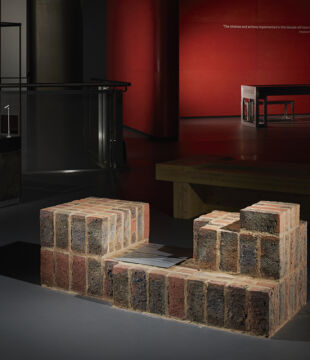
Details
Project Country: India
Architect: virmueller architects
Brickwork Contractor: abhinav singh
About the project
The density and the intensity of megacity urbanity, where air pollution and environmental degradation are pre-conditions for design, presents a particular challenge for the creation of secure educational environments. This project for a nursery school is conceptualised as a cocoon - a safe and delightful haven for young children as they engage with early years learning. The school is organized as a set of organic ‘cells’ classrooms centered around a courtyard. The courtyard assumes primacy as the focal space within - draped in a tent and illuminated softly from skylights. With walls in brick, exposed concrete columns and slabs, and coloured terrazzo flooring as the primary materials for the project, the architecture maintains a serene yet robust presence in the complex urban landscape.
The galleries weave around the courtyard, suffused with daylight, and lined with a lattice rail in birch veneer plywood - a soft counterpoint to the red brick walls. The totem of a concrete cylinder conceals an elevator, anchoring the courtyard, where the play of light and shadow remains a constant kinetic presence on its curved surface. The terrace playground encircles the tented courtyard, offering a safe space for the children to soak in the winter sunshine.
Ecological values drove the design, although the clients were unequivocal in their belief that building sustainably was not to be confused with obtaining any certification! The building - a three storeyed low-rise structure, built to the seismic codes for a Zone 4 site – comprises of a reinforced concrete frame structure, with infill walls built in a ‘rat-trap’ bond configuration. This enabled a significant material saving (almost 35% less bricks were used). The interior gains great thermal comfort from the air-cavity in the bond and the building has a remarkably low air-conditioning load.
All exterior glazing is screened behind a brick lattice – for privacy and for the elimination of glare. Summer temperatures are routinely over 45 degrees Celsius, but the building naturally maintains an internal ambient temperature of 32 – 33 degrees Celsius. No paint has been used in the entire building. Hence, all surfaces – the terrazzo and brick floors, the brick walls and concrete columns and slabs, and the birch doors and railings – are all used in their ‘natural’ state. Suffused with natural illumination, the building uses minimal electric light during the daytime schedule. All water used in the building is routed to a small on-site sewerage treatment plant, minimally treated, and then recycled in the pollinator garden that encircles the building.
Most significantly, the two-year long construction process offered full-time employment to over fifty masons, carpenters, brick layers, electricians and plumbers. The social and economic impact of this craft-based construction technique has been significant. No commercial construction company was engaged; the clients and architects worked directly with skilled craftspeople, on long-term contract, thus enabling them to have a secure work environment.
This project, designed and built economically, posits an optimistic architectural premise: careful and ethical design may yet mend the fabric of lives in beleaguered cities, and unleash new senses of beauty, of opportunity.
Sponsored by Kingscourt Country Manor Bricks

















